Bolex H16 User
For Practical Bolex H16 Filming
Shot with a Bolex
This is by no way an exhuastive list of all the films that have been shot with a Bolex over the years becuase that would frankly be impossible as it has been widely used as a production camera in many different shooting situations. What i've tried to do on this page is pick the most well known easily accessible productions it has been used on. If your know of a famous film, documentary animation or moment of news that was captured on a bolex email me and if worthy enough i'll add it to this list. UPDATED 4TH DECEMBER 2013
Feature Films
"Rebuilding the World Trade Center" (2013 Lion Films)
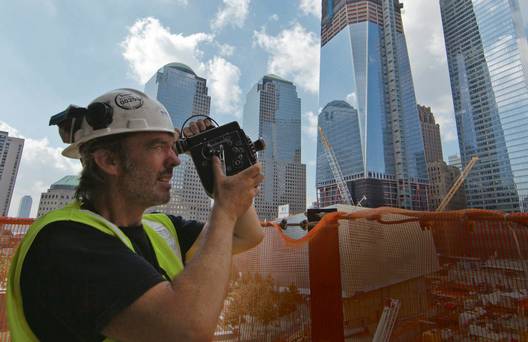 Irish painter / filmaker / artist Marcus Robinson tried for a number of years after hearing about the ambitious rebuilduing plans for the world trade center to be allowed access to film the reconstruction. When he is, so starts a 7 year artist in residency
Irish painter / filmaker / artist Marcus Robinson tried for a number of years after hearing about the ambitious rebuilduing plans for the world trade center to be allowed access to film the reconstruction. When he is, so starts a 7 year artist in residency
Shot in a variety of formats. Video was used for any sync sound shots of workers discussing the job. Timelapse sequences came from a 35mm Cameflex Eclair.
The Bolex was used for a variety of shots throughout but i think Marcus used it the most probably in tight spaces when he wanted to shoot film when up close and personal with the workers and not get in the way when there about to attach another 2 ton girder.
"Away
From Her" (2007 )
)
Away From Her is the screenplay adaptation of celebrated author Alice Munro's short story "The Bear Came Over the Mountain".
A man coping with the institutionalization of his wife Fiona because of Alzheimer's disease faces an epiphany when she transfers her affections to another man, Aubrey, a wheel chair-bound mute who is a fellow patient at there nursing home.
When Aubrey's wife, returns from her vacation, she suddenly takes Aubrey out of the home to the devastation of Fiona who enters into a deep depression. Her condition deteriorates rapidly. Grant, Fiona's wife fearful for Fiona's life, embarks on the greatest act of self-sacrifice of his life as a means to attaining his wife's eventual happiness.
Director of Photography Luc Montpellier biggest challenge was to communicate the human subtleties in a relationship plagued with Alzheimer's.
To try and capture that he shot segments on a hand-held, hand-cranked Paillard Bolex H-16 converted to Super-16. "The Bolex's frame registration gave the images an un-fluid quality, sometimes full of clarity, and other times clouded by emotion, that I believe mirrors my experience with memory."
 "Chain"
(2004)
"Chain"
(2004)
Veteran indie filmmaker Jem Cohen's first feature film shows how multinational companies create airports, hotels, shopping malls etc that are void of regional character and offer up instead a bland cultural standardisation in design.
Beautifully shot by Cohen and 6 years in the making it follows two women, one a Japanese businesswoman doing research on theme parks, the other a teenage runaway living inside a mall as they live there lives in this landscape.
The backbone of the film is an amazing conceit: the locations we see the leads shot in each time while apearing to be the same place were actually shot over six years in more than ten US states and eight countries. Re emphasiing the blandnest of global corporate spaces
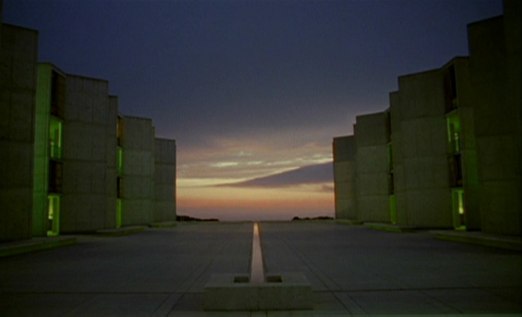 "My
Architect" (2004)
"My
Architect" (2004)
This documentary shot by Nathaniel Kahn tells the story of his father Louis I Kahn a famous architect who fathered children in 3 families, none of whom knew about the others until they all met at his funeral.
Some really stunning timelpase shots were made with the Bolex and a Norris Intervelometer. You also get to see Nathaniel using his Bolex with a Manfrotto tripod on a number of ocassions in the film itself.
The documentary is structured so that when the buildings take centre stage the Bolex takes over.
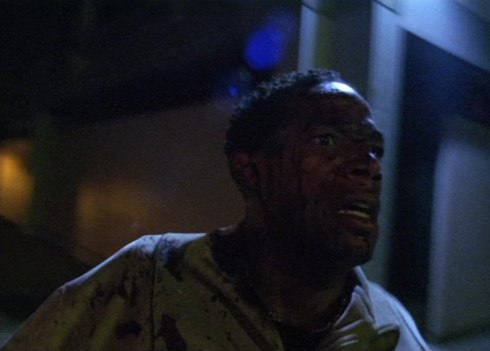 "Requiem
for a Dream" (2000)
"Requiem
for a Dream" (2000)
This brilliant film by Darren Aronofsky concerns the lives of a number of drug addicts. Jared Leto and Jennifer Connelly play a young couple, Harry and Marion, who dabble in heroin and plan to make a big sale along with their friend Tyrone so they can be set up financially for life.
Unfortunately, their recreational drug use turns into day-to-day addiction, and things start to get ugly and we see in the latter half there gruesome, worst-case-scenario fates.
The bolex is used a number of times throughout the film in Snorricam mode. A technique invented by two Icelandic photographers where a camera is strapped to the actors body but pointing at them so when they move the actor stays in focus but the background blurs.
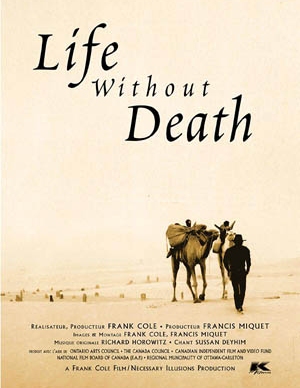 "Life
Without Death" (2000)
"Life
Without Death" (2000)
Life Without Death is an intense personal account of filmmaker Frank Cole's Guinness Record crossing of the Sahara Desert by camel from the Atlantic Ocean to the Red Sea. In the course of his journey, as he overcomes thirst, loneliness and getting lost, Cole is also forced to confront his own mortality.
On November 29, 1989, Frank Cole, a Canadian, departed from Nouakchott, Mauritania, and crossed the African continent from west to east via the Sahara Desert alone by camel. He arrived in Suakin, Sudan on November 3, 1990 after having travelled 7,100 km.
Striking images of his Saharan odyssey and flashbacks of his aging grandfather timelessly fuse with an evocative music score by Richard Horowitz to create an unsettling meditation on death and a powerful cry for life. Cole used 3 Bolex camera bodies and a self timer unit to film himself during this epic trip.
After completing LIFE WITHOUT DEATH, Frank Cole returned to the Sahara to undertake another desert crossing via a more remote route. He was killed in northern Mali in mid-October 2000 in the course of an attack by bandits. His remains have been recovered and are being preserved at the Cryonics Institute in Detroit.
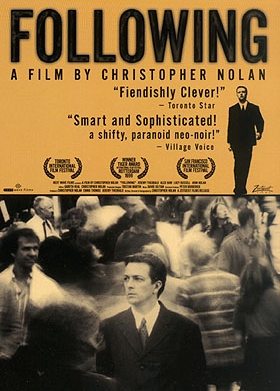 "Following"
(1998)
"Following"
(1998)
Christopher Nolan he of Memento, Batman Begins and The Prestige made his feature film debut with Following. Bill is an unemployed aspiring writer who lives a solitary and boring life in London but has a fascination with people, and with hopes of finding material to write about, begins to pick individuals out of a crowd, and to follow them.
Bill establishes rules to keep him out of trouble and to keep his 'following' random, but soon enough he breaks one of his rules by following someone more than once. The character he follows on numerous occasions first is Cobb (Alex Haw).
Cobb a confident and intelligent burglar catches Bill spying on him and soon involves Bill in his peculiar burglaries. Similar to Bill's interest in following, Cobb has a great interest in the individuals he is stealing from.
During the robbery of a residence Bill becomes interested in the woman (Lucy Russell) who owns the flat, so he begins to follow her. Eventually he decides to meet her and they begin seeing each other. This upsets Cobb as he also learns the woman has asked Bill to do a job for her.
But things are not as they seem, and soon Bill will find out why. Various street scenes of Bill walking around following people were shot hand held on the Bolex.
 "Pi"
(1994)
"Pi"
(1994)
Pi is an extremely inventive film about how a crazed mathmetician tries to discover a pattern in the stock market and therefore be able to exploit it for financial gain.
The film was shot mostly on Black and white 35mm but certain parts were shot on 16mm. Most 16mm shots are Snorricam shots where the Bolex camera is strapped onto the actors chest pointed back at him shooting while he tries to outrun the people who are chasing after him who want to exploit his theory.
There are other shots where he is walking around New York which were obiously shot with a Bolex as there is no sync sound and just naration on the soundtrack. The film is a very original inventive low budget feature.
 "Bad
Taste" (1987)
"Bad
Taste" (1987)
Initially Peter Jackson (he of Lord of the rings fame) made a 15min short film about aliens invaling a small New Zealand town which then turned into a full length feature film.
Peter started making the film in 1983 and finally finished it in 1987. The reason for the long filming duration being he had to hold down a regular job on the local newspaper to pay for it and could only film on weekends.
Towards the end of filming the New Zealand Film Commison steped in to help having been so impressed with what had been shot so far.
They offered him a grant of £18k to finally finish. Peter shot the film throughout using a Bolex SBM and made his own steadicam.
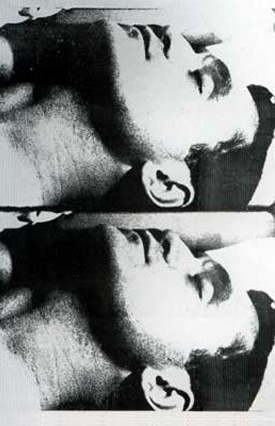 "Sleep"
by Andy Warhol (1968)
"Sleep"
by Andy Warhol (1968)
The artist Andy Warhol bought a Bolex camera in the early 60's to make experiemntal films and document his life and the people around him. One of the first films he made using it was called Sleep. This was one shot of a man lying on his side sleeping. The shot never moved or switched position it was just him sleeping. It lasted 8 hours.
This was a considerable achivement considering that the Bolex only can take 3 minute loads of film and using wind up only shoot 30 seconds at a time. But Andy didn't actually expose 8 hrs worth of film he just looped a number of shots to make up 8hrs.
On it's premier screening (Yes it did appear at a Cinema) the audience reacted violently demanding there money back with half the audience walking out after only 1hr.
 "Endless
Summer" (1966)
"Endless
Summer" (1966)
Bruce Brown's fun and hip 1960's surfer film is always associated with being shot using a Bolex. Bruce used a Rex 2 with a Yvar 150mm lens setup on the beach to capture all the shots of his surfer friends catching waves.
The film got a theatrical release in the 60's and contains Bruce's witty commentarary (becuase there was no on location sound filming) thoughout. His camera seems to be a permanently roving eye and it really captures the hippie generation well. If your into surfing you'll enjoy this film of the early surf pioneers.
Practically all the surf films shot during this time period were shot with a Bolex and were usually showed in Hall's where the filmaker who took them would do a kind of real life running commentary. There are lots of films therefore i could have added to this section but decided just to pick this one as it is the most well known example of the many surf films made with a Bolex.
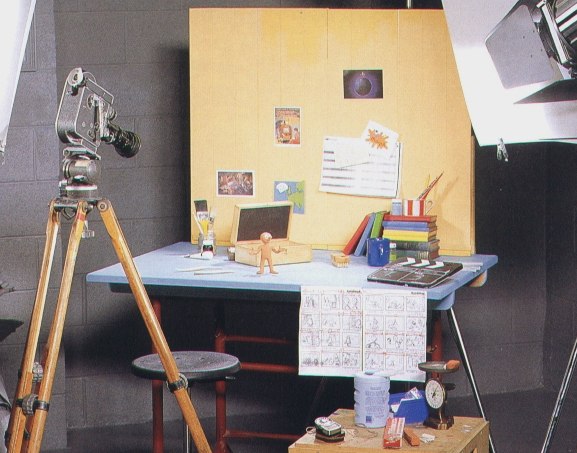 Animation
Animation
One of the fields that the camera has made a permanent mark in is that of animation. In fact it was and still is considered as thee Animation camera of choice for stop motion animation in 16mm.
It has certainly been responsible for some of the most fondly rembered British Childrens animation of all time. In fact it is such a staple of the animation field an animation company in Bristol (the home of Brirish animation) is named after the camera, the company is called Bolex Brothers.
Because there are so many animation shows made using them i have had to limit this section.
 "Magic
Roundabout" (1964)
"Magic
Roundabout" (1964)
Serge Dano's much loved 60's animated TV series originally shot in black and white and then in colour concerning the characters Dillon, Dougal, Florence and zebeede much loved by the baby boom generation was shot in france throughout the 60's using Bolex cameras.
Originally Sege Dano worked for an advertising company in France and one of his commisons involved stop motion animation he then had the idea of doing a childrens series. It became a hit all around the world being translated into multople languages.
 "Tom
Thumb" Bolex Brothers (1983)
"Tom
Thumb" Bolex Brothers (1983)
This remarkable British film that took over a year to make and lasts only 60minutes is a tour deforce of stop motion animation. Real people are put into positions and animated using stop motion animation a process called Pixelation along with original animated characters.
So for instance a person is animated while holding in his hands an animated charater. The film is very dark unique and original. Shot throughout using a Bolex camera. It really showcases what can be done on animation using them.
The company who made it are called Bolex Brothers named after the camera they used to make this and other animated films and which the British animation industry largely adopted as thee camera to use for it's work.
 "Harvie
Krumpet" (2003)
"Harvie
Krumpet" (2003)
Shot with a Super 16mm Bolex over 15 months from October 2001 through to Januray 2003 it tells the story of an ordinary man cursed with perpetual bad luck.
Harvie lives n a Polish forest who is bullied as a child becuae of having Tourettes Syndrome. At the age of 18 his parents are found frozen to death and he has to live on a rubbish dump where he gets struck by lighting.
This quirky sounding film is enlived by its beautiful animation. So much so that it won an Academy Award for Best Animated Short film in 2003. Beating off the likes of Disney, Pixar and 20th Century fox. So a Bolex, talent and some plastcine can still beat off the CGI.
Documentary
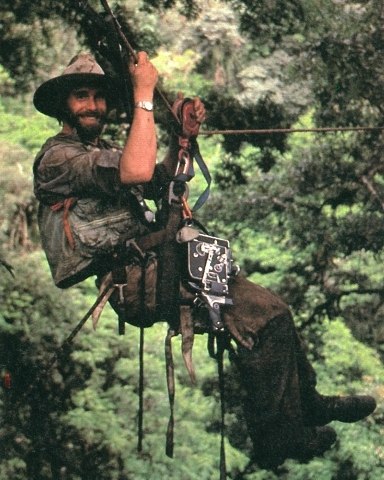 "The
Private Life Of Plants" (1994) 6 x 1hr
"The
Private Life Of Plants" (1994) 6 x 1hr
Shot around 1992-1994 David Attenborough's Private life of plants is another landmark series from the world renowed wildlife expert. The series showcases the work of two filmakers who used Bolex camera's extensively on timelapse shoots.
In fact the entire series is a showcase of timelapse photography becuase what plants do cannot be captured or illustrated in any way better than timelapse. Some of the killer shots obtained were a rare watter lilly opening which it does for just one night and a field of bluebells growing. Both shots utilised a Bolex camera on a Camera Dynamics movable track.
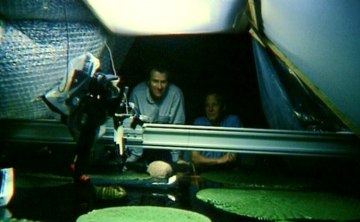
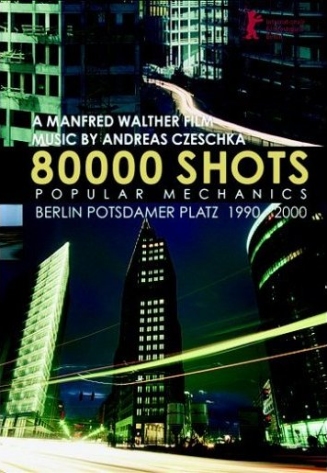 "80000 Shots" (2002)
"80000 Shots" (2002)
A labour of love for one man over 13 years 80000 shots documents a part of Berlin City called Potsdammer Platz. A square which previously was a centrally located hub of the city became a desolate no mans land after the Berlin wall cut it in two in the 1960's. When the wall fell this area of the city became a national embarrassment and so began ambitious rebuilding plans and for ten years it became the largest building site in Europe.
Local photographer Manfred Walther began filming the wall coming down and began daily to film the reconstruction using a 16mm Bolex employing time-lapse techniques. A lot of the shots were gained through extreme dedication by him manually standing next to the camera and using a cable release so he could alter the exposure time and the time between exposures. Later on he also built various motors and actuators to drive the camera automatically, move it 360 degrees and drive a zoom lens.
What stands is an extraordinary achievement to the engineering capability of humans and there capacity to build. The film turns these slow activities into revelatory experiences like never before. It reminded me a great Deal of one of my favourite films Koyaanisqatsi. There is no narration and the soundtrack consists of orchestra matching the movements of the film, it lets the images speak for themselves.
The determination of seeing this project through a decade by financing the film personally must have been a real burden of time and money. But what an achievement and for a lot of people it is still a yet to be discovered gem.
Music Videos
The field of Music Videos (or should that be music films) is perfect for the Bolex to handle. With the soundtrack already prepared and no on location sound needed it doesn't matter how noisy the camera is and no other camera offers so many useful in camera effects.
 White Stripes "Fell in Love with a Girl" (2002)
White Stripes "Fell in Love with a Girl" (2002)
Shot over the course of 2 months by Michael Gondry this 2 minute stop motion music video using only Lego Bricks garnered 3 MTV Music Awards for its inovation.
The Band was shot originally on a video camera against blue screen and then a low resolution printout was made of each frame. This could then be used as a guide for assembling the images in Lego Bricks.
Gondry says "We would have to shoot one frame then we'd undo it and build the next but ss soon as you have to change one brick, you have to demolish the whole construction, leaving no trace of it to reconstruct the next frame."
Over Christmas 2003 the BBC showed a film to go with the Music of Gustav Holtz's legendary Planets Suite. It was shot with a minimal crew of 3 on location in some of the most harsh conditions in the world using 2 Super 16mm converted Bolex's, one nearly 30 years old and one brand new with a full compliment of Switar lenses.
Nick Edwards the DOP said "I used all the features the Bolex offered, including high-speed, time-lapse, multi-exposure, long exposure and uniquely hand cranking. It performed superbly in locations ranging from Arctic snow wastes to the Nevada desert".
One of the undoubted benefits of shooting with
the Bolex is the fact that Nick could pack up all his kit and carry it
himself and also the fact he didn't have to worry about charging batteries.
![]() "This
modest kit let me work quickly and unobtrusively. One of the great benefits
of the Bolex is its wind up clockwork motor. No heavy rechargeable batteries
to lug about."
"This
modest kit let me work quickly and unobtrusively. One of the great benefits
of the Bolex is its wind up clockwork motor. No heavy rechargeable batteries
to lug about."
